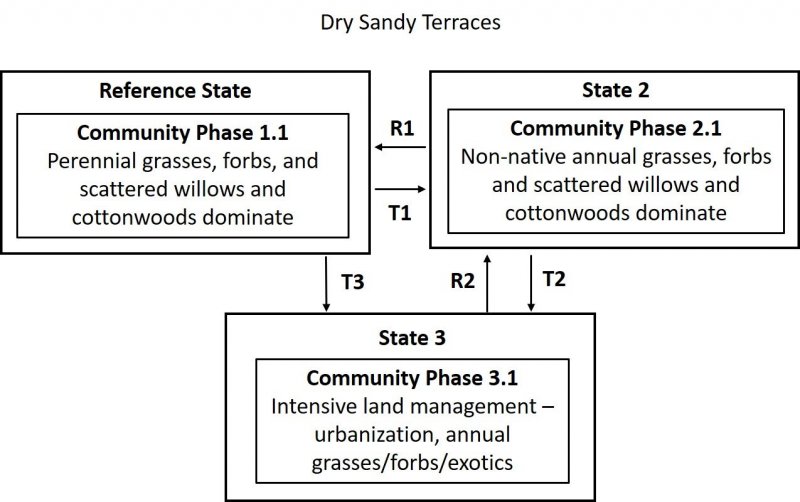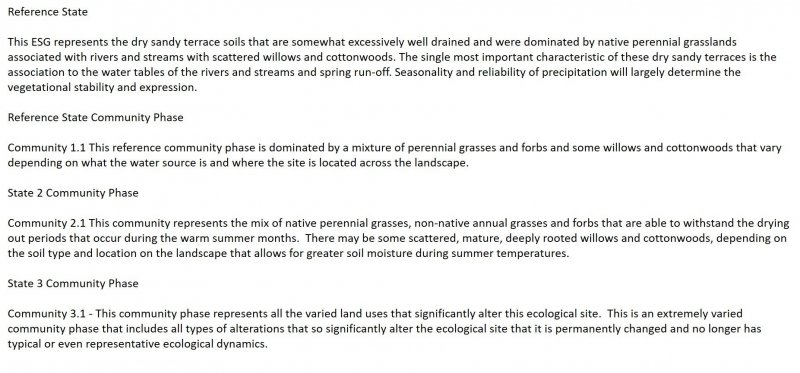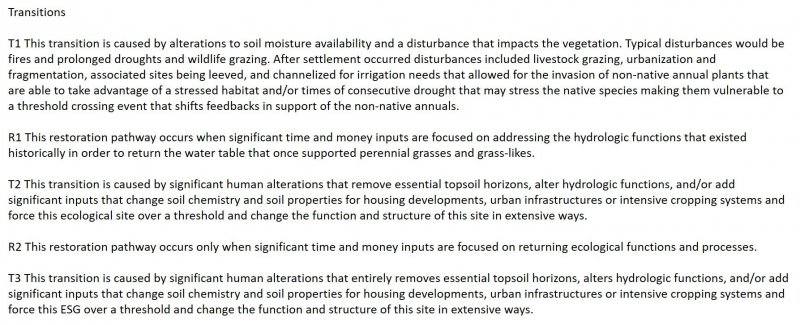Ecological site group R014XG914CA
Sandy Terrace
Last updated: 09/07/2023
Accessed: 12/19/2025
Ecological site group description
Key Characteristics
None specified
Provisional. A provisional ecological site description has undergone quality control and quality assurance review. It contains a working state and transition model and enough information to identify the ecological site.
Physiography
This ESG is typically found on alluvial terraces and some low-lying sandy uplands. Slopes typically range from 0 to 10% and elevations vary from sea level to 1000 ft.
Climate
The average annual precipitation in this area is 11 to 53 inches (272 to 1,353 millimeters). The higher amounts of precipitation occur at the higher elevations in the area north of San Francisco. Most of the rainfall occurs as low- or moderate-intensity, Pacific frontal storms during winter. This area is very dry from mid-spring to mid-autumn. Snowfall is rare. The average annual temperature is 54 to 61 degrees F (12 to 16 degrees C). The freeze-free period averages 315 days and ranges from 265 to 365 days. It is longest near the coast, and it becomes shorter with elevation.
Soil features
The soils of this ESG consist of deep, somewhat excessively to somewhat poorly drained soils that formed in old sand dunes and coastal terraces near the coast.
Some representative soils include:
Baywood, a sandy, mixed, thermic Entic Haploxeroll
Watsonville, a fine, smectitic, thermic Xeric Argialboll
Vegetation dynamics
This ESG covers the areas of the valleys in MLRA 14 that were at one time part of a vast complex of coastal prairies and stabilized dunelands. The urbanized landscape in these coastal areas within this MLRA that exist today makes it difficult to imagine the natural landscape prior to human development.
These sandy terraces receive significant soil moisture from coastal storms and fog-influence that ameliorates the evapotranspiration rates typical of these coarser-textured soils. Once the area began to be settled, much of this site was drained, leveed, cleared for crops and other agriculture, and urbanized.
These rapidly drained sandy soils transition rather rapidly to an altered state with the extended periods of warmer temperatures and less fog, leaving them dry during most of the growing season. The coarser sand textures dry out more rapidly through both drainage and evapotranspiration making them less hospitable for many of the native perennial grasses and providing opportunities for non-native annual grasses and forbs to invade and begin dominating. In areas with finer sands, the site might be slightly more resilient. Annual production will vary depending on the soil texture and proximity to groundwater sources.
Historically, this site may have looked similar to coastlines to the north that were a patchwork of open coastal prairies and coastal dune vegetation. With the introduction of non-native annual grasses and the impacts from fragmentation, extensive agriculture, continued de-watering, and human alterations such as homes and roads, this site now reflects a lower producing, dry, annual grassland with scattered coastal scrub species. Species composition is also related to water availability with greater amounts of relic perennial grasses in areas of greater precipitation or soil moisture.
Information from:
John G. Kie
California Wildlife Habitat Relationships System
California Department of Fish and Game
California Interagency Wildlife Task Group
Major Land Resource Area
MLRA 014X
Central California Coastal Valleys
Stage
Provisional
Click on box and path labels to scroll to the respective text.


